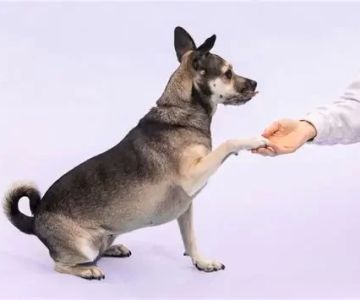- 1 - Understanding Challenges in Multi-Pet Homes
- 2 - Why Some Dogs Struggle with Multiple Pets
- 3 - Key Strategies for Training Dogs to Be Calm in Multi-Pet Homes
- 4 - Establishing a Consistent Routine for Calmness
- 5 - Teaching Dogs Personal Space and Boundaries
- 6 - Positive Reinforcement and Managing Competition
- 7 - Real-Life Experiences and Success Stories
- 8 - When to Seek Professional Help
- 9 - How Hidden Brook Veterinary Can Assist
- 10 - Final Tips for Creating a Peaceful Multi-Pet Home
1. Understanding Challenges in Multi-Pet Homes
Living in a multi-pet home can bring joy and companionship, but it also comes with unique challenges, especially when it comes to maintaining calm and harmony between pets. Dogs, in particular, can struggle with the presence of other animals due to territorial instincts, competition for attention, and differing energy levels. This can result in stress, anxiety, and sometimes aggressive behaviors, creating tension in the household.
Training dogs to remain calm in multi-pet homes is crucial to building a peaceful environment for both pets and their owners. With the right strategies and patience, it's possible to teach your dog how to coexist peacefully with other pets, creating a calm atmosphere for everyone in the household.
2. Why Some Dogs Struggle with Multiple Pets
Dogs are naturally territorial animals, and when more than one pet enters their space, they may feel threatened, stressed, or anxious. Dogs that haven't been properly socialized may react more intensely to the presence of other animals, especially if they feel their territory or resources (like food, toys, or your attention) are at risk.
Additionally, dogs with high energy levels or strong prey drives may find it difficult to relax in a home with other pets, leading to hyperactive behavior, barking, or even aggressive interactions. Understanding why your dog may struggle with a multi-pet environment can help you tailor your training approach to their specific needs.
3. Key Strategies for Training Dogs to Be Calm in Multi-Pet Homes
Training a dog to stay calm in a multi-pet environment requires consistency, patience, and positive reinforcement. Here are some key strategies that can help your dog feel more at ease around other pets:
1. Start with gradual introductions: When introducing a new pet to the household, it's essential to do so gradually. Keep the pets separated initially and allow them to get used to each other's scent before any face-to-face interactions.
2. Use positive reinforcement: Reward your dog for calm behavior around other pets. This could include treats, praise, or a favorite toy. Positive reinforcement helps your dog associate the presence of other pets with good things.
3. Manage behavior during playtime: Playtime can be a source of excitement and competition. Supervise interactions closely and intervene if necessary, rewarding calm play and discouraging roughhousing or aggressive behavior.
4. Establishing a Consistent Routine for Calmness
Dogs thrive on routine, and this is especially true in multi-pet homes. Establishing a consistent daily schedule for meals, walks, playtime, and rest can help reduce anxiety and promote calm behavior. When dogs know what to expect, they are less likely to become stressed by changes in their environment or the presence of other pets.
Be consistent with your dog's training, too. If you set boundaries for certain behaviors, ensure that all members of the household reinforce these rules consistently. Inconsistency can confuse your dog and make it harder to maintain calmness around other pets.
5. Teaching Dogs Personal Space and Boundaries
In multi-pet households, it's important to teach dogs to respect each other's personal space and boundaries. This includes teaching your dog to leave other pets alone when they're eating, resting, or playing with their toys. Providing each pet with their own designated space (e.g., separate beds, feeding areas) can help prevent territorial disputes and reduce stress.
Use crate training or baby gates to create safe zones where each pet can retreat when they need some alone time. This helps prevent conflicts and gives your dog a sense of security in their environment.
6. Positive Reinforcement and Managing Competition
Competition for attention, food, or toys is a common issue in multi-pet households. To manage this, be sure to give each pet individual attention and time with you, especially if you're training them. Use positive reinforcement to reward calm behavior during times of competition, such as when they wait their turn for a treat or toy.
If you notice that one pet is becoming overly dominant or aggressive, step in immediately and redirect their attention to a positive activity, such as a game or training session. Reinforce calm behavior and discourage aggressive or possessive actions by rewarding the right behaviors.
7. Real-Life Experiences and Success Stories
Many pet owners have successfully trained their dogs to coexist peacefully with other pets in their home. One dog owner shared that after several weeks of supervised introductions and consistent positive reinforcement, their dog, initially reactive to other animals, now enjoys calm, friendly interactions with the family cat and even another dog they introduced later on.
Another success story involved a rescue dog who struggled with food aggression toward other pets. Through consistent training, boundary setting, and the careful management of feeding time, the dog gradually became more relaxed around other pets during meal times.
8. When to Seek Professional Help
If you're finding it difficult to manage your dog's behavior around other pets despite your best efforts, it may be time to consult with a professional dog trainer or behaviorist. These experts can offer personalized advice, assess your dog's behavior, and develop a tailored training plan to address any underlying issues. Additionally, if your dog exhibits signs of severe aggression or anxiety, professional intervention is crucial to ensure their safety and the safety of other pets in the household.
9. How Hidden Brook Veterinary Can Assist
At Hidden Brook Veterinary, we understand the unique challenges that come with managing multi-pet households. Our team is equipped to offer guidance on behavior management, provide recommendations for professional trainers, and even help with medical assessments if your dog’s anxiety or behavior may be linked to health issues. We are committed to ensuring that both your pets and your household can live in harmony.
10. Final Tips for Creating a Peaceful Multi-Pet Home
Creating a peaceful environment in a multi-pet household takes time, patience, and a solid plan. Keep training sessions short and consistent, establish clear boundaries, and ensure each pet has their own space. With the right approach, your dogs can learn to live calmly with other pets, reducing stress and enhancing their quality of life.
For more tips on managing a multi-pet home, or if you need assistance with behavior management, visit Hidden Brook Veterinary for expert advice and support.










